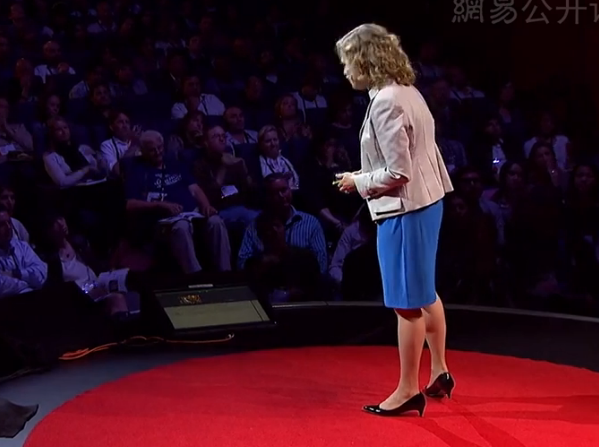Beyond these technical solutions,
除了这些技术层面的措施意外,
our work at the Georgetown Climate Center with communities
我们位于乔治城气候中心和社区共同工作
encourages them to look at what existing legal and policy tools are available
鼓励他们参考现存的法律和政策
and to consider how they can accommodate change.
并且考虑如何才能适应变化。
For example, in land use, which areas do you want to protect, through adding a seawall,
譬如,用地,哪片地区你想要通过用建设防波堤的方式去保护,
for example, alter, by raising buildings, or retreat from,
再比方通过升高建筑,或向后搬迁
to allow the migration of important natural systems, such as wetlands or beaches?
去允许重要的自然系统迁徙,比方说湿地或者沙滩?

Other examples to consider.
这里同时有其余的例子,
In the U.K., the Thames Barrier protects London from storm surge.
在英国,泰晤士河保护伦敦免遭于风暴潮袭击。
The Asian Cities Climate Resilience Network is restoring vital ecosystems like forest mangroves.
亚洲城市气候变迁韧性组织正在修复类似于红树林的重要的生态系统。
These are not only important ecosystems in their own right,
这些生态系统不仅仅是本身是重要的
but they also serve as a buffer to protect inland communities.
而且同时充当了缓冲区的作用来保护内陆地区。
New York City is incredibly vulnerable to storms,
纽约在暴风雨面前显得十分脆弱,
as you can see from this clever sign, and to sea level rise,
就想你在这块指示牌上看到的一样,纽约同时也经不住海平面上升
and to storm surge, as you can see from the subway flooding.
暴风雨,正如你从这幅纽约地铁涨水图中看见的一样。
But back above ground, these raised ventilation grates
但是当我们返回到地面,这些上升的地铁通风格栏
for the subway system show that solutions can be both functional and attractive.
系统提醒我们措施可以同时是有功能效应且引人注意的。
In fact, in New York, San Francisco and London,
事实上,纽约,旧金山和伦敦,
designers have envisioned ways to better integrate the natural and built environments with climate change in mind.
设计师们已经设想出了能更加契合自然并且兼顾应对自然变化的建设方法。
I think these are inspiring examples of what's possible
我认为这些设想都是十分打动人心的例子
when we feel empowered to plan for a world that will be different.
让我们认为自己有能力去改变这个世界。
But now, a word of caution.
但是现在,请谨记着
Adaptation's too important to be left to the experts.
对这些专家而言适应也是十分重要的。
Why? Well, there are no experts.
为什么?因为就没有所谓的专家。
We're entering uncharted territory, and yet our expertise and our systems are based on the past.
我们正在进入一个全新的领域,而目前为止,我们的专长和系统都仅仅是建立于过去的。
"Stationarity" is the notion that we can anticipate the future
“平稳”是我们将使用于未来的准则
based on the past, and plan accordingly,
基于经验,同时随机应变,
and this principle governs much of our engineering,
与此同时,这也是一个领导我们当今工程
our design of critical infrastructure, city water systems,
当今设计核心基础设施,城市排水系统,
building codes, even water rights and other legal precedents.
建筑规范,甚至用水权以及其余判例的词。
But we can simply no longer rely on established norms.
但是我们在也不能仅仅依靠建立规范了。
We're operating outside the bounds of CO2 concentrations that the planet has seen for hundreds of thousands of years.
我们已经超如了地球上已经恪守了成千上万年的二氧化碳浓度限制。
The larger point I'm trying to make is this.
我在这里想说的是
It's up to us to look at our homes and our communities,
这是我们的责任去照顾我们的家园和社会
our vulnerabilities and our exposures to risk,
我们的脆弱且易暴露于危险之中的家园。
and to find ways to not just survive, but to thrive,
不仅仅是去找寻一个生存的办法,而是一个繁荣兴旺的办法。
and it's up to us to plan and to prepare
而且这是我们的责任去规划和准备
and to call on our government leaders and require them to do the same,
提醒我们的政府领导并且要求他们去做同样的事,
even while they address the underlying causes of climate change.
即便与此同时他们正在强调潜伏的气候变化原因。
There are no quick fixes.
这没有权宜之计。
There are no one-size-fits-all solutions.
这里没有完全之策。
We're all learning by doing.
我们只有从实践中学习。
But the operative word is doing.
关键词是做去,去实践。
Thank you.
谢谢。











